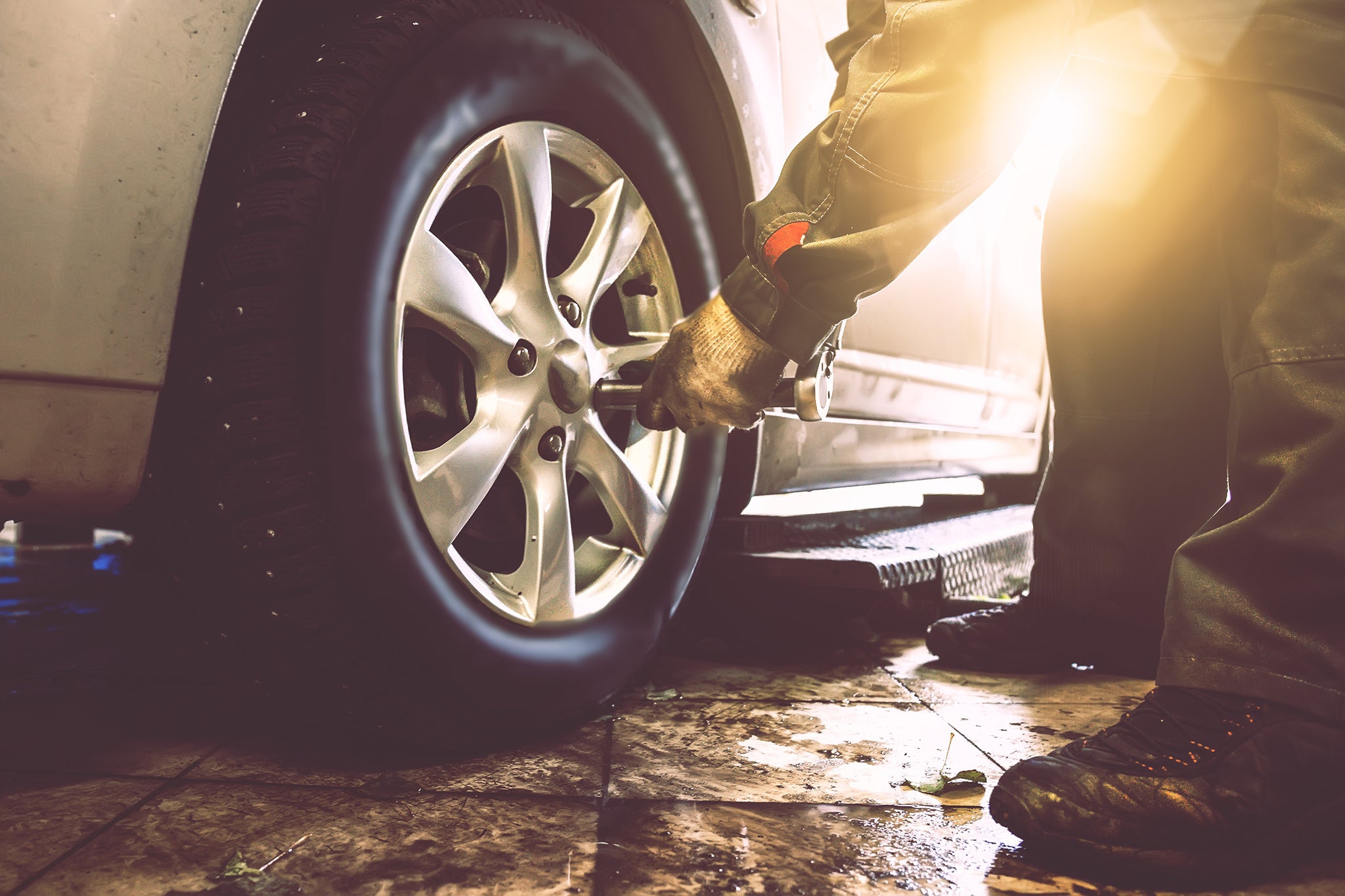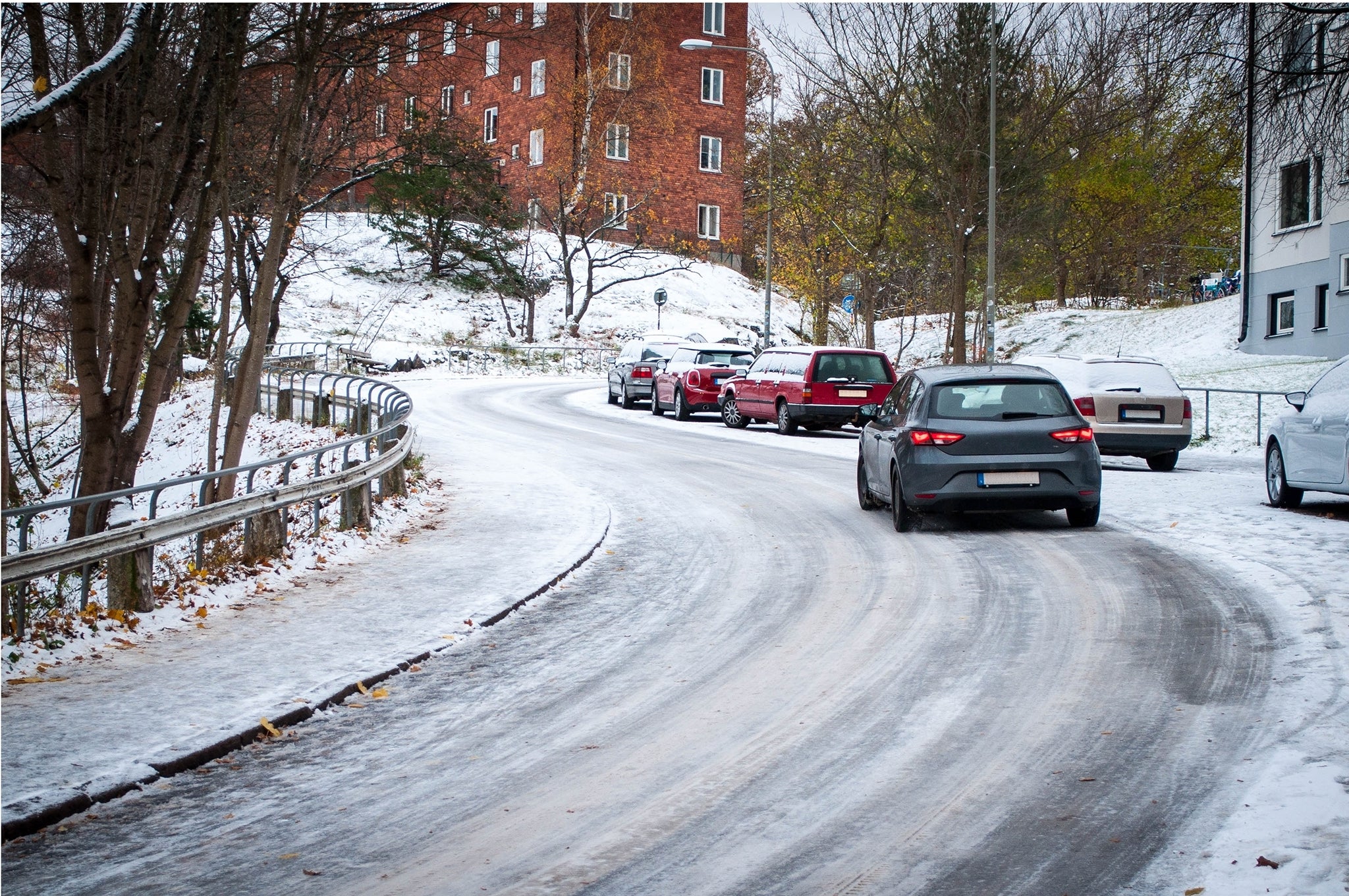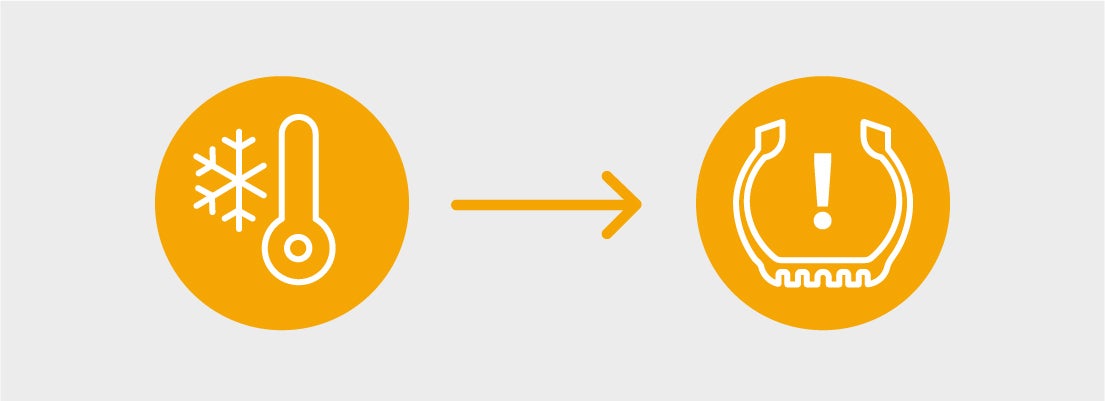
#WinterWorld
Tire pressure in winter
Does cold weather affect tire pressure?
The short answer: yes! Here’s how to make sure your tire pressure is always right in cold weather
- Find your vehicle’s recommended tire pressure
- Check your tire pressure every two weeks
- Air pressure drops by 1-2 PSI or 0.07 to 0.14 bar with every 10°C
- Studded winter tires also need regular maintenance
- Check your air pressure even if you have a tire pressure monitoring system
Maintaining correct tire pressure not only ensures optimal traction and grip on any road surface, it also gives you more mileage for your fuel and even reduces CO2 emissions. However, as soon as the temperature drops during cold winter months, it’s important to be vigilant of your tires’ inflation pressure. Once you‘ve prepared your car for winter and fitted it with winter tires, you also need to adapt your tire pressure checks to the seasonal conditions.
Let’s take a closer look at how cold weather affects air pressure and how you can effectively monitor it for maximum driving comfort.

How does cold weather affect tire inflation?
As a rule of thumb, when the temperature decreases by 10°C, tire pressure drops between 0.07 to 0.14 bars or 1 to 2 pounds per square inch (PSI).

Furthermore, if you live in or travel to a location where there is high elevation, tire pressure is further reduced with every added meter of altitude. For this reason, it’s important to regularly check and maintain all four of your tires’ inflation levels.
Not sure what your tire pressure should be? There are several places you can find it in your vehicle:
- On the fuel filler door
- On the door frames of the driver’s and passenger sides
- Your vehicle’s manufacturer’s handbook
Inflating your winter tires according to your car manufacturer’s recommendation helps maintain good traction and handling on slippery icy surfaces, no matter the temperature change. Obviously, the same goes for all-season tires.
I have a tire pressure monitoring system (TPMS), do I still need to check air pressure?
In short, yes, you need to regularly check the inflation levels. As the temperature drops in cold weather, you might notice your TPMS symbol illuminating more often than usual – particularly in the morning when the air is cold. This is most likely due to the temperature dropping overnight, along with the bar or PSI level. However, this is no reason to become complacent when it comes to maintaining your wheels. You should check the air pressure at least every two weeks. In fact, while your tires might look fine, a tire can be under-inflated before it’s visibly noticeable! When checking your tire pressure, you can also take a minute to check the condition and tread depth of your winter tires
How important is inflation pressure for winter tires with studs?
If you live in a region where roads often get covered in ice and where studded tires are allowed or necessary in winter, maintaining the correct air pressure is just as important as it is for non-studded tires. Maintaining the correct levels will provide maximum performance and safety. Poor maintenance can lead to premature stud loss.
How to check and adjust your tire pressure
As inflation tends to drop with the temperature in cold weather, it’s important to check tire inflation every two weeks. Here are some simple tips to help you check and adjust your tire pressure:
- Ensure your tires are cold.
You’ll get a more accurate reading if you check the pressure first thing in the morning or when they haven’t been used for some hours. - Always check your vehicle’s handbook.
If you’re not sure, refer to the vehicle’s manufacturer’s handbook. It will specify the minimum amount of air pressure needed in cold tires to support your vehicle. - Use a quality gauge and air compressor.
You can buy a reliable gauge and air compressor from an auto store or you can simply use one free of charge at a petrol station. Try make a habit of checking your tires every time you fill up. - Check the pressure and adjust the inflation properly.
Place the gauge onto the valve stem and press down firmly until the hissing sound of air escaping stops. The gauge will show a reading of the pressure in PSI or bar. Make sure it matches the manufacturer’s recommendation. If it’s too high, push the valve to let out some air. If the air pressure is too low, attach the air compressor to the valve and fill the tire until it reaches the recommended level.
Related content
-
 2024/10/17Changing tiresThe seasons change, so why not the tires on your car? We explain how a driver should choose between summer tires, winter tires, or all-season tires.Read more
2024/10/17Changing tiresThe seasons change, so why not the tires on your car? We explain how a driver should choose between summer tires, winter tires, or all-season tires.Read more -
 2024/10/17Prepare your car for winterEnsure you have the right supplies for the season ahead with our winter car kit checklist.Read more
2024/10/17Prepare your car for winterEnsure you have the right supplies for the season ahead with our winter car kit checklist.Read more -
 2024/10/17Tread on winter tiresTread is important in every season, but even more so when roads are slippery, cold and frozen, so check your winter tires!Read more
2024/10/17Tread on winter tiresTread is important in every season, but even more so when roads are slippery, cold and frozen, so check your winter tires!Read more